Baisakhi, the harvest festival of Punjab, is synonymous with frolic and dance, which marks the start of the harvest season. This is one of the most celebrated festivals, primarily on April 13 or 14 each year, and is of great importance to the people of Punjab due to its connotation of thanksgiving and joy. Baisakhi is the harvest festival of Punjab and a time to celebrate not only the harvest but also to pay homage to the establishment of the Khalsa by Guru Gobind Singh Ji in 1699. This guide provides everything you need to know about Baisakhi.
About Baisakhi
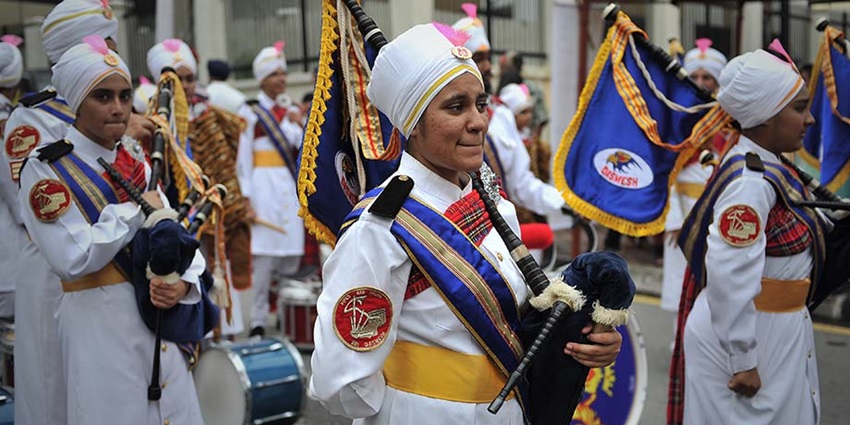
Photo: Firdaus Latif / Wikimedia Commons / Image For Representation Only
Baisakhi celebrations differ from region to region in Punjab but ultimately they reflect the themes of joy and gratitude. The celebrations involve rural villagers performing folk songs and dances and sharing meals. In the urban region, massive processions feature decorated floats which are adorned with Sikh symbols and artwork. Gurdwaras organise special prayer services where communities gather and pray for prosperity in the upcoming year. The atmosphere during the Baisakhi festival is filled with music, dance and delicious food, thus making it a cherished occasion for all.
Baisakhi is a festival which is celebrated on April 13 or 14 every year. It is one of the biggest harvest festivals in Punjab as it is deeply rooted in agricultural tradition. The festival symbolizes gratitude for a bountiful harvest and holds great significance in Sikh tradition, marking the establishment of the Khalsa by Guru Gobind Singh Ji in 1699. This event transformed the Sikh identity by emphasizing equality and community. Baisakhi has evolved as a vibrant cultural festival over time as it features dance, music, etc.
Suggested Read: Places To Visit Near Jalandhar For An Amazing Experience
Things To Do At Baisakhi
1. Attend Melas
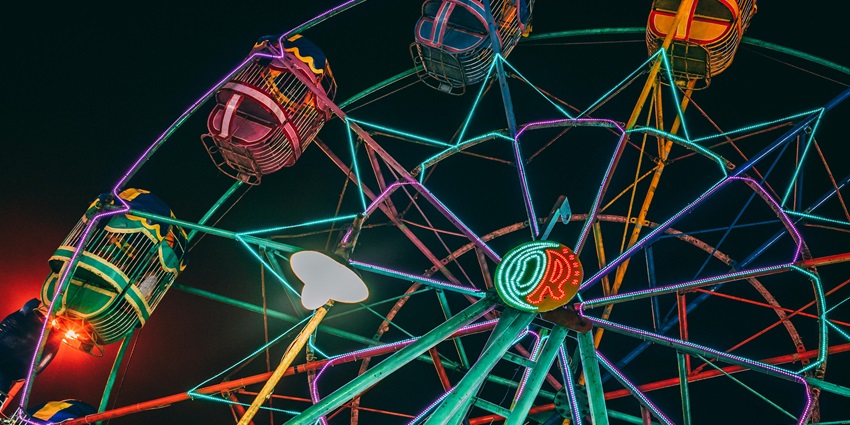
Photo: Agung Pandit Wiguna / Pexels
Baisakhi melas are vibrant celebrations celebrated throughout the state at those places where the festival is being celebrated. It brings local culture into implementation through handcraft stalls selling traditional clothes and mouth-watering Punjabi cuisine. Visitors can enjoy street performances, dances, and cultural exhibits showcasing Punjab’s rich heritage. Such socialisation in these local festivals leads one to experience a sense of belonging and the feeling of becoming a part of the celebration while enjoying all the cuisines that symbolise the euphoria of Baisakhi.
2. Take Part In Traditional Music & Bhangra Dances
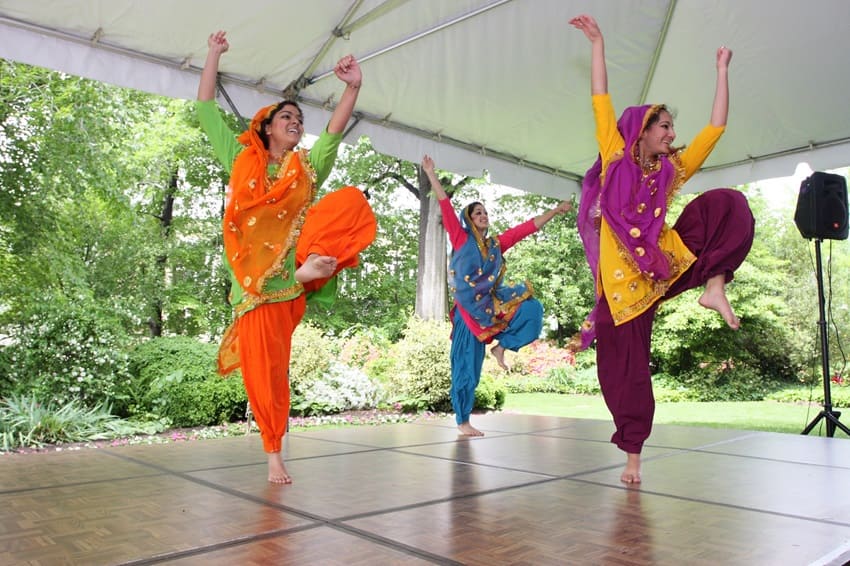
Photo: Shamrock23 / Wikimedia Commons
Traditional music and dance, however, accompany Baisakhi celebrations. Participating in energetic performances of Bhangra and Gidda is a celebration of the harvest season through vibrant garments and energetic movements. Local artists at times perform in such community gatherings where people are urged to participate together. The blissful expression of culture not only entertains everyone but also makes people proud of being together with their heritage during the festival. Dancing together creates bonds of all those participants that are cherished for a lifetime with laughter, joy, and cultural pride.
Suggested Read: Things To Do In Amritsar
3. Engage In Nagar Kirtan
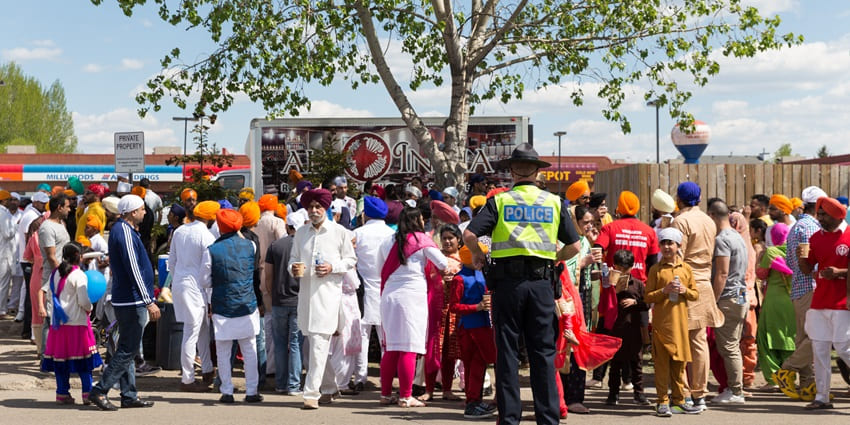
Photo: Mack Male / Wikimedia Commons
Nagar Kirtan is one of those rich processions which acquire a vital position in the celebrations of Baisakhi. Singing hymns and reciting prayers are part of this ceremony, where people walk through the streets with the holy Guru Granth Sahib. With traditional clothing and martial arts, this procession is exciting enough. The upbeat celebration builds community relations and commonality among those participating, bringing the concept of happy spiritual Baisakhi celebrations into each other’s lives while honouring one’s culture.
4. Attend Community Service
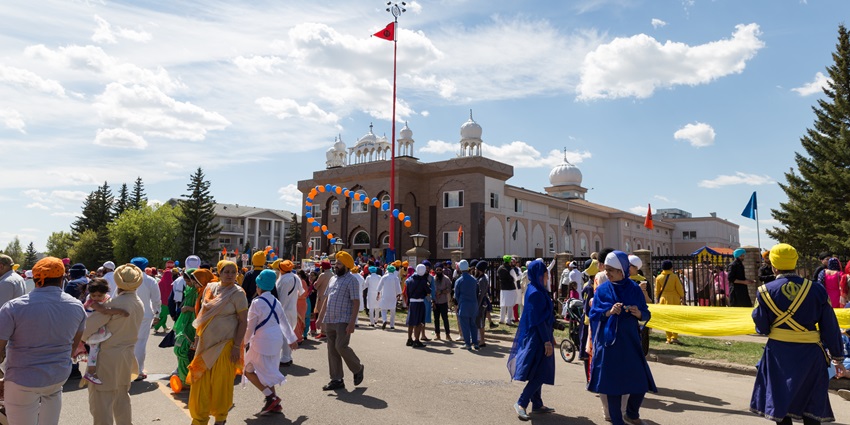
Photo: Mack Male / Wikimedia Commons
Baisakhi also marks the occasion for giving and doing acts of service and kindness for the community. Many people take part in different charitable activities such as food or clothing distribution or blood donation drives. This Seva spirit, as stated earlier, is a reflection of the core Sikh values while driving home the point that one should try to help the needy. The undertakings in the community during the celebration of Baisakhi are very compassionate with the social connections strengthened within this societal unit. For this reason, conducting community service during such festivals gives better meaning to the celebration since positive impacts are caused to other people’s lives.
Suggested Read: Things To Do In Jalandhar
5. Visit Gurdwaras For Special Prayers
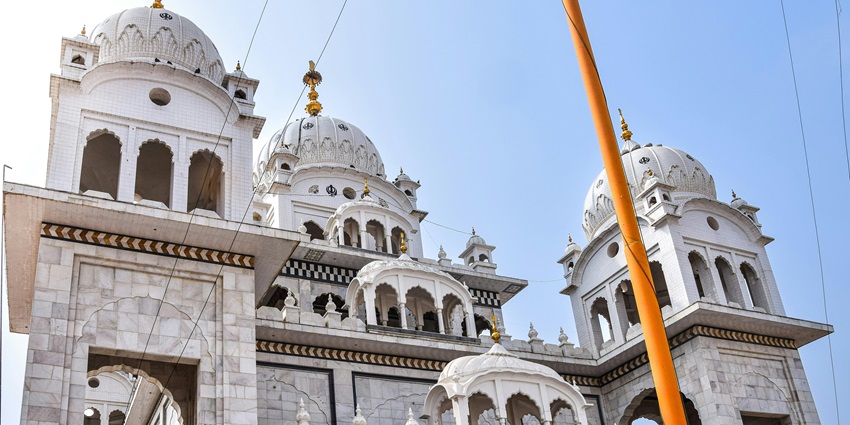
Photo: AXP Photography / Pexels
The visits to the Gurudwaras form the backbone of Baisakhi celebrations. On this day, Sikhs visit the Gurudwaras for prayer and participate in the Ardas, listening to Kirtan, and devotional hymns on their Gurus. These scenes are highly pious as devotees hail for the harvest of their crops and pray for welfare. Langar, which is synonymous with equality and sharing, is prepared in most of the Gurudwaras and is an integral part of the celebration and develops community feelings as well.
Places To Celebrate Baisakhi
1. Amritsar
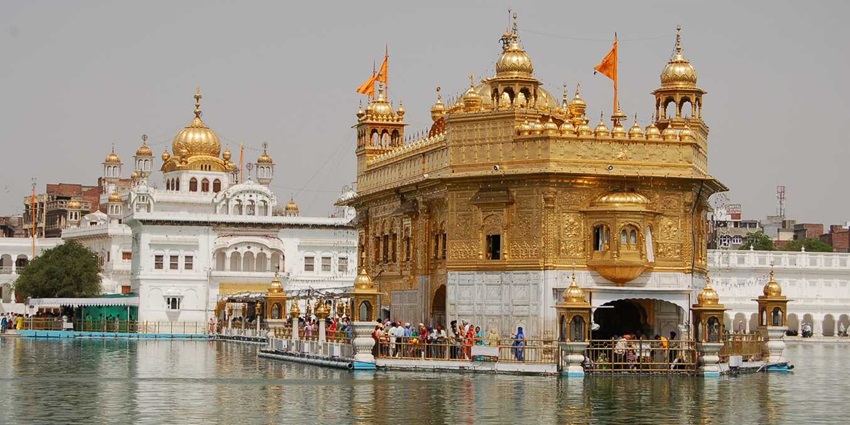
Photo: Msdstefan / Wikimedia Commons
Amritsar is the heart of Baisakhi celebrations, where the Golden Temple shines brightly during the festival. Thousands gather for special prayers and community feasts, emphasising the spirit of unity and gratitude. The city hosts vibrant processions featuring beautifully decorated floats and traditional music. Locals and tourists alike participate in folk dances such as Bhangra and Gidda, creating a lively atmosphere. The combination of spiritual significance and cultural festivities makes Amritsar an unforgettable destination during Baisakhi.
Suggested Read: Offbeat Things To Do In Jalandhar For A Cultural Experience
2. Ludhiana
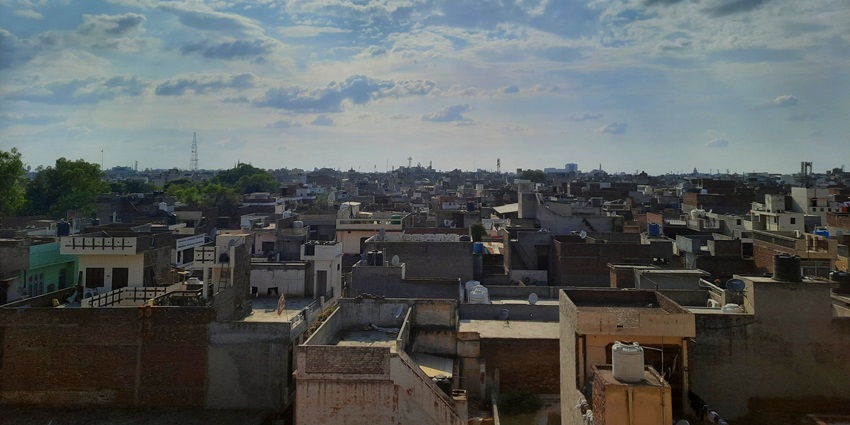
Photo: Benison P Baby / Wikimedia Commons
Ludhiana celebrates Baisakhi with great enthusiasm, showcasing its rich agricultural heritage. The city organises colourful parades that feature traditional music, dance performances, and vibrant floats representing local culture. Community gatherings are common, where families come together to enjoy festive meals of traditional Punjabi dishes. The lively atmosphere is further enhanced by folk dance competitions that invite everyone to join in the fun. Ludhiana’s unique blend of tradition and modernity makes it a captivating place to experience Baisakhi.
3. Jalandhar
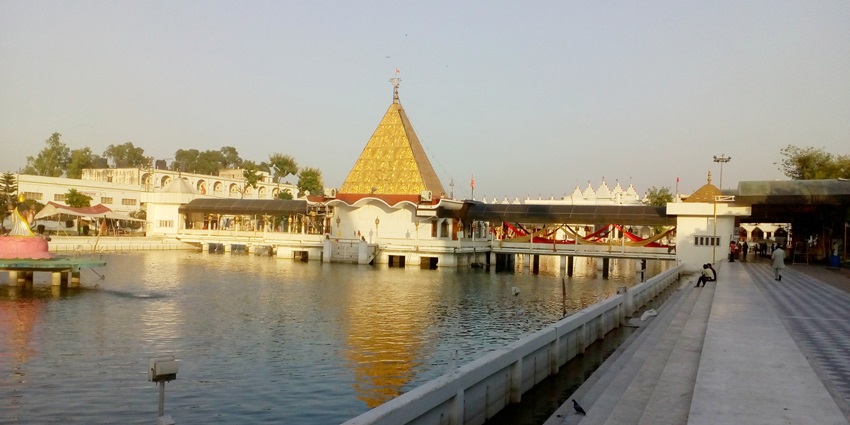
Photo: Shivamsetu / Wikimedia Commons
Jalandhar offers a distinctive celebration of Baisakhi, characterised by its strong sense of community and tradition. The city hosts various cultural events, including folk music performances and dance competitions that engage residents and visitors alike. Gurdwaras organise special prayer services, where people gather to express gratitude for the harvest. Traditional fairs with stalls selling local crafts and delicious food add to the festive spirit. Jalandhar’s warm hospitality and vibrant celebrations make it an ideal location for experiencing Baisakhi’s essence.
Suggested Read: Best Places To Visit In Patiala
Where To Eat
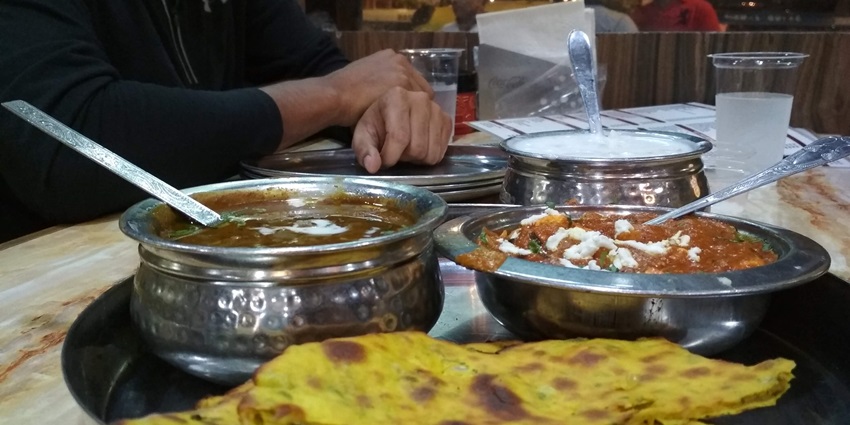
Photo: Commanderchinu / Wikimedia Commons
Stay comfortably in Punjab at luxurious accommodations like Taj Swarna Amritsar, which offers excellent facilities. Radisson Blu Hotel Mohali offers luxury and style with its rooms and fine dining. Hyatt Regency Chandigarh offers luxurious facilities with a beautiful view. Hotel Punjab Palace Amritsar is an economical stay, with very cosy rooms. And lastly, The Lalit Chandigarh – styling elegance combined with comfort for a lifetime memorable stay in Punjab.
Where To Stay

Photo: Pixabay / Pexels / Image For Representation Only
Punjab presents to its guests the most elaborate gourmand experience with thousands of possibilities of restaurants. Bistro Flamme Bois is known in Amritsar for wood-fired pizzas. In Amritsar, it is possible to find the real Punjabi recipe: Kesar Da Dhaba offers dal makhani. Balle Balle Dhaba in Ludhiana is a place of traditional food, which is located in a rural atmosphere. Sagar Ratna in Chandigarh serves South Indian dishes, and Pal Dhaba in Jalandhar is famous for butter chicken and other local specialities.
Suggested Read: Shopping Malls In Ludhiana
Other Factors To Consider
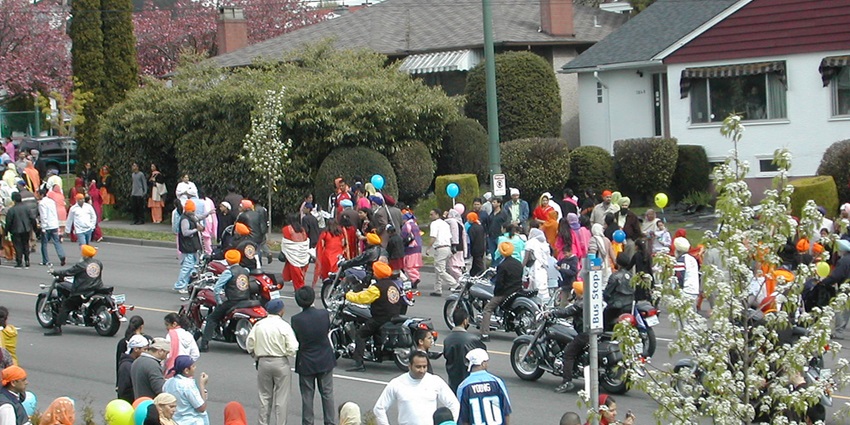
Photo: aufumy / Wikimedia Commons / Image For Representation Only
Average Cost Of The Trip
The average cost of a trip to Punjab for the Baisakhi harvest festival can vary significantly depending on travel choices. A round-trip train or bus ticket might cost between ₹800 to ₹2,500. Accommodation in budget hotels or guesthouses may range from ₹1,000 to ₹3,000 per night. Adding food and local transportation, a budget traveler could spend around ₹3,000 to ₹7,000 for a memorable experience during this vibrant and cultural celebration.
Tips For Travellers
- At local markets and food stalls, cash is often preferred as digital payments are not widely used.
- Make arrangements for accommodations and transportation well in advance to avoid last-minute hassles.
- Wear comfortable traditional attire that allows you to participate fully in the festivities while respecting local customs.
- Carry water bottles with you, especially if you plan to spend long hours outdoors enjoying the celebrations.
Agricultural communities, as well as Sikhs, hold Baisakhi close to their hearts! Baisakhi is a festival which is the harvest festival of Punjab, and is celebrated with glee all around the region in April every year, which reminds people of nature’s bounty while strengthening cultural bonds among those staying here! Fests are a chance to come close to Punjabis’ spirits as well as cuisines, beautiful dances, and bonds formed during these days! Don’t miss the chance to experience Baisakhi up close if you visit Punjab during the celebrations. Book your trip with TripXL to learn more about visiting Punjab with your family during the next Baisakhi festival.
Cover Photo: Vijay Sadasivani / Pexels


 WhatsApp
WhatsApp
 Twitter
Twitter









